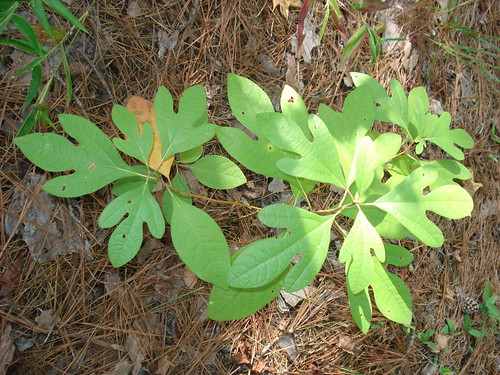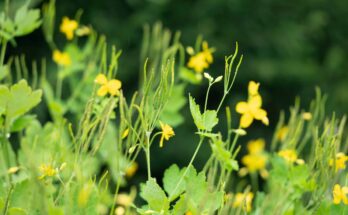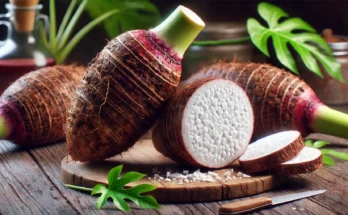Sassafras, a tree native to North America, has long been admired for its distinctive aroma and diverse applications. Often associated with its role in traditional remedies and culinary delights, sassafras is more than just a fragrant tree. This natural gem is rich in history, health benefits, and unique uses that continue to captivate herbalists, chefs, and nature enthusiasts alike. Let’s dive into the incredible benefits and uses of sassafras that have made it an enduring part of cultures around the world.
What is Sassafras?
Sassafras (scientific name Sassafras albidum) is a deciduous tree found primarily in the eastern United States, although it can also be spotted in parts of Canada and Mexico. This tree is easily recognized by its distinctive three-lobed, mitten-shaped leaves, vibrant fall color, and aromatic bark. Sassafras has a long history of use, particularly in indigenous cultures, and has been widely incorporated into medicine, food, and even cosmetics.
1. Traditional Medicinal Uses: A Time-Honored Remedy
For centuries, sassafras has been used in traditional medicine to treat a variety of ailments. Native American tribes, for example, utilized the roots and bark of the sassafras tree to create teas and tinctures believed to have healing properties. Some of the most notable medicinal benefits include:
- Detoxification: Sassafras is thought to have detoxifying properties. The root bark is commonly used in herbal teas aimed at purging toxins from the body. Historically, sassafras was often used in spring tonics to cleanse the blood.
- Anti-inflammatory: Sassafras contains compounds that may reduce inflammation, making it useful for treating conditions like arthritis or general muscle pain.
- Digestive Aid: Sassafras tea has been used to soothe indigestion, stimulate appetite, and relieve nausea.
- Antimicrobial and Antiviral: Sassafras bark is also believed to possess mild antimicrobial properties, which may help combat infections or support general immune health.
However, it’s worth noting that while sassafras has a rich history in herbal medicine, the U.S. Food and Drug Administration (FDA) has raised concerns about the safeness of sassafras oil, particularly due to its compound, safrole, which has been linked to liver toxicity and cancer in high doses. As a result, sassafras should be used cautiously, and consulting with a healthcare professional is advisable before its use for medicinal purposes.
2. Culinary Delights: A Flavorful Ingredient
Sassafras is perhaps most widely recognized in the culinary world for its role in creating root beer, a classic American soft drink. The roots of the sassafras tree, when processed correctly, impart a unique flavor that is both sweet and earthy. Here are some culinary uses of sassafras:
- Root Beer: Sassafras was once a key ingredient in the original recipe for root beer, giving the beverage its distinct taste. While modern root beer is often made with artificial flavors or safrole-free sassafras extract, the traditional concoction remains a nostalgic favorite.
- Filé Powder: The leaves of the sassafras tree are dried and ground into a fine powder, known as filé powder. This spice is commonly used in Cajun and Creole cuisine, particularly in gumbo, to thicken the stew and add a unique flavor.
- Herbal Teas: Sassafras roots and leaves are sometimes used to make herbal teas that carry the tree’s signature flavor. These teas are enjoyed for their taste and potential medicinal qualities.
3. A Natural Insect Repellent
Sassafras has another intriguing benefit: it can act as a natural insect repellent. The aromatic compounds found in the leaves and bark of the tree are unpleasant to many common pests. Some people have used dried sassafras leaves as a natural deterrent to moths, mosquitoes, and other insects. Whether used in sachets for clothing storage or burned as a mild incense, sassafras can help keep bugs at bay without the use of harsh chemicals.
4. Cosmetic and Aromatherapy Uses: A Fragrant Touch
The essential oils extracted from sassafras bark, though limited in modern use due to regulatory restrictions on safrole, have historically been valued for their pleasant, spicy fragrance. In aromatherapy, the scent of sassafras was believed to have mood-lifting properties, promoting relaxation and mental clarity. Though modern formulations of sassafras essential oil often omit safrole, this oil can still be found in some niche products.
- Sassafras Soap: Some small-batch soap makers incorporate sassafras extract into their products for its fragrance and potential skin-soothing properties.
- Fragrance Additives: Due to its distinctive, sweet-spicy scent, sassafras has been used in candles, incense, and potpourri for its ability to freshen the air and create an inviting atmosphere.
5. Ecological Role and Wildlife Habitat
Beyond its uses for humans, sassafras plays an important role in the ecosystem. The tree’s flowers provide nectar for a variety of pollinators, including bees and butterflies. Additionally, sassafras leaves serve as a food source for some herbivorous insects, such as the spicebush swallowtail butterfly, whose larvae feed on the tree’s foliage.
Furthermore, sassafras trees can be part of forest regeneration efforts. Sassafras is a pioneer species, meaning it is one of the first to establish itself in disturbed soils. As such, it plays a role in reforesting areas where the natural landscape has been altered or destroyed.
6. Craft and Dye Applications
Historically, indigenous peoples also used sassafras for crafting and dyeing. The bark and roots of the tree contain tannins and other compounds that can be used to create dyes for fabrics. The yellow and green hues from sassafras dyes were once prized for their brightness and richness.
7. A Sustainable and Resilient Tree
Sassafras is a hardy, resilient tree that thrives in a variety of soil types and climate conditions. It is a valuable species in reforestation and land restoration projects due to its rapid growth and ability to improve soil quality. This makes it an eco-friendly choice for urban landscaping, as it provides both shade and aesthetic value while requiring minimal maintenance.
Final Thoughts: Embracing Sassafras in the Modern World
Sassafras may be an ancient natural resource, but its many uses continue to be relevant today. From its medicinal properties and culinary applications to its role in the environment and natural beauty products, sassafras is a multifaceted gift from nature. While it’s important to use it responsibly due to safety concerns, particularly with sassafras oil, there’s no denying that this tree remains a treasured part of both American history and modern life. Whether you’re exploring its traditional uses or discovering new ways to integrate it into your daily routine, sassafras truly is a natural gem that offers a wealth of benefits.



